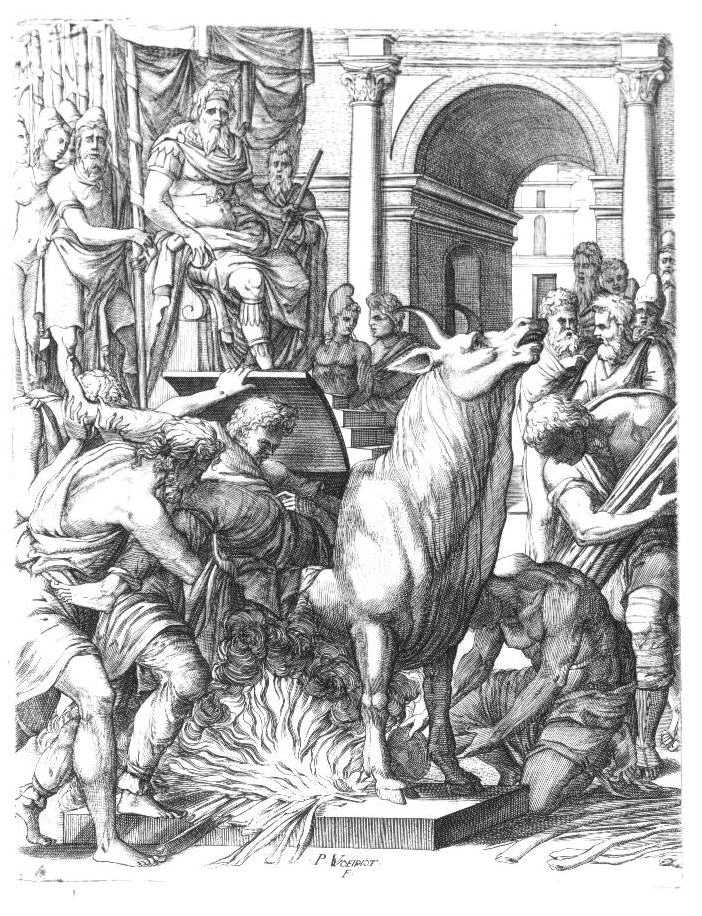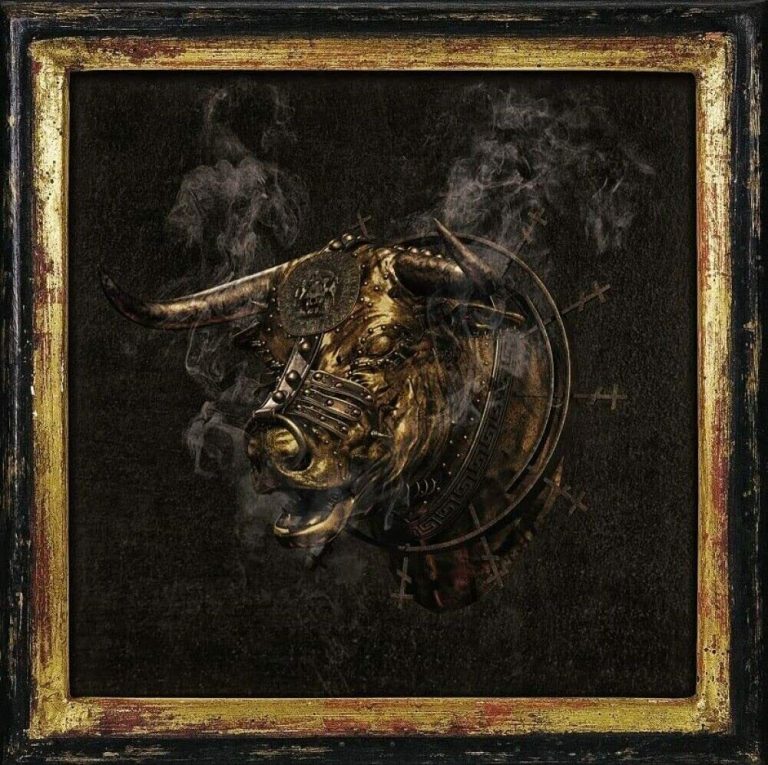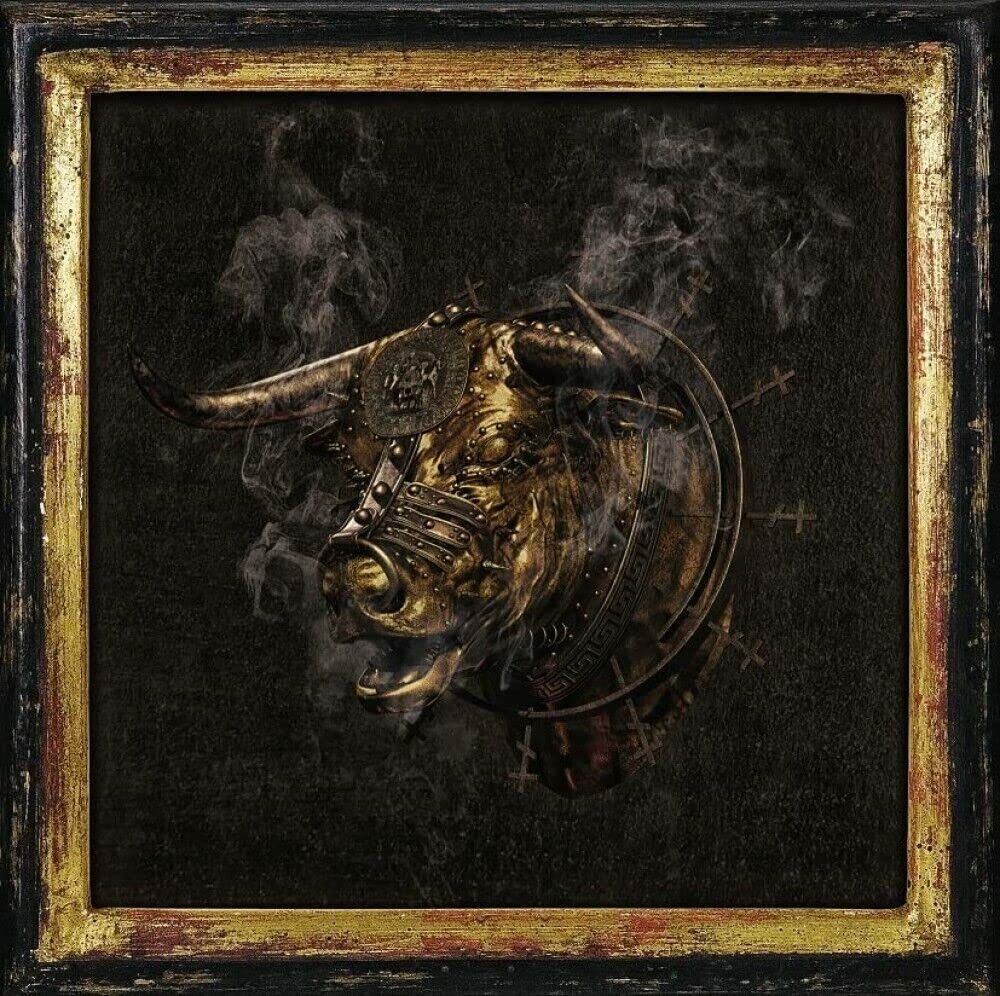The World we still live in
PHALARIS is DIR EN GREY’s eleventh studio album and marks the most recent album today. It was released on the 15th of June, 2022, via Firewall Div. and follows The Insulated World from 2018. The work on PHALARIS began right after finishing the prior album. In several interviews, the members stated that they did not have a particular concept in mind at first. But vocalist Kyo stated that he wanted to create some longer tracks and that he gave himself the task of trying something new.[1]
The recordings for the new album started at very short notice in the beginning of 2022. In March, the last song was recorded—approximately three months before the planned release. The visual and aesthetic concept of the album was worked out before and during the recordings.[3] But what is it about?
The Imaginary of Phalaris

This work of horror was commissioned by Phalaris, the tyrant of Acragas, today’s Agrigento, in Sicily, Italy. Several Greek historians, such as Aristotle, reported that Phalaris was a cruel and violent tyrant.
After Perilaus finished the Brazen Bull, Phalaris commanded Perilaus to enter the horrific device and scream, so Phalaris could hear if his crying converted to a bull bellow. Perilaus had no choice but to follow his commander’s orders. As Perilaus climbed into the bull, Phalaris ordered the door to be closed and a fire to be lit under the bull. »As thanks for his fantastic work, the artist was to be granted the privilege of playing the first piece on his device,« as the legends tell.
The sadistic reign of Phalaris lasted about sixteen years until he was killed by an insurrection. It’s said that the Brazen Bull was thrown into the sea.

The Sound of the Brazen Bull
The first song of the album, Schadenfreude, was the last track the band recorded. Kaoru stated that this song wraps up the whole sound of PHALARIS. Shinya and bassist Toshiya each mentioned in different interviews, that Schadenfreude was the most complicated song for them to play.
The shortened sheet music was still 14 pages long. Together with the last song on the album, Kamuy [カムイ], Schadenfreude is the longest track on the album.
Both songs have a playtime of over nine minutes. You can hear a constant deep bass line in Schadenfreude, which emphasizes the harshness and depth of this song. So indeed, this song would also fit in the tracklist of Dum Spiro Spero. In contrast, Kamuy which follows a more melodious pattern, gives us more MACABRE (2000) vibes. But both songs are still way more developed than the past songs and we guess, Kyo was content, that the album contains two long tracks.
The second track we dip into is The Perfume of Sins, which is graced a music video and was published a few weeks before the album’s release. According to an interview with Shinya, this is one of the fastest songs from the entire DIR EN GREY discography regarding the drumming. It indeed shows elements such as blast beats that are known to be used in Black Metal songs.
Furthermore, it’s a song that Kyo rejected to sing where he would commonly sing. DIR EN GREY aimed to create a menacing atmosphere by not using Kyo’s voice as they did in The Insulated World. Their approach is attacking the lyrical themes with the melody instead of words. For instance, through the heavily distorted guitar tremolo which forms the bridge, and rough blended strings in the background.
In Conclusione

PHALARIS
2022.06.15 Firewall Div. / Sony Music Japan
01. Schadenfreude
02. Oboro [朧]
03. The Perfume of Sins
04. 13
05. Utsutsu, Bouga o Kurau
[現、忘我を喰らう]
06. Ochita Koto no Aru Sora
[落ちた事のある空]
07. Mouai ni Shosu [盲愛に処す]
08. Hibiki [響]
_________
[1] PHY vol.21, Higuchi Yasuyuki (author), kyotaku (translation), June 2022
[2] Rhythm & Drums Magazine, interview with drummer Shinya, 2022.07.26
[3] Tokyo Sports, interview with guitarist Kaoru, 2022.06.29

